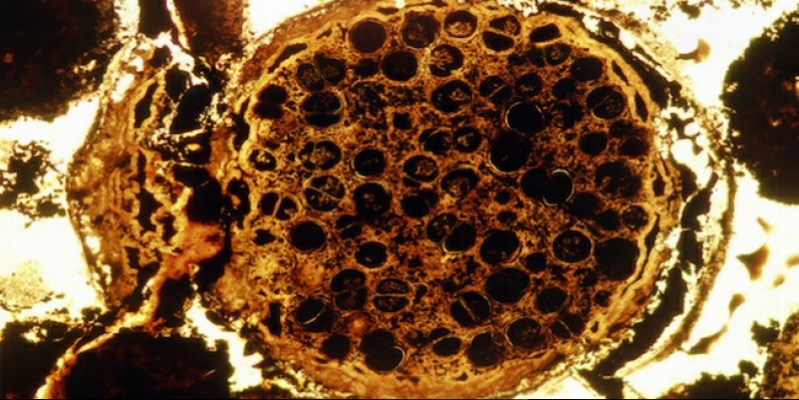At first glance, this seems like fossils pomegranate fruit in half lengthwise, but recent studies have revealed that this 600 million-year-old remains of an unknown animal.
These findings dating back to before the "Cambrian explosion era - era, when there were a large part of the ancestors of modern animals. The researchers say that this is one of the earliest known complex multicellular creatures.
Megasferomis (ang. Megasphaera) named only 0.7 millimeter in diameter fossils have been found in southern China, the rock stratum - Doushantuo. More about the story in the latest discovery in the journal Nature.
To convey the uniqueness of fossils, we emphasize that these burgeoning organisms themselves (ie, 600 million years ago):
It was left even 370 million years before the first appearance of the dinosaurs;
Only after 180 million years of land plants began to grow, which has fundamentally changed the landscape of the Earth and formed the new ecosystems;
It took well over 599 million years before the first modern humans evolved.
Chinese Academy of Sciences, Professor Lei Chen, who with his colleagues unearthed the fossils of these very old, said that in previous studies, it has been undervalued.
Scientists continued: "Even though it seems, but multicellular does not align with the evolutionary development of bacteria and single-celled protozoan. This proves organisms visible signs of clear cell differentiation: programmed cell death and cell division of sex. "
Therefore, the researchers concluded that this is the earliest group of animals whose ancestors are not the same, all of which have evolved now living creatures.
So, on the evolutionary tree branches sit these mysterious creatures? Scientists are hoping to answer this question in the near future, and in doing so, they have great opportunities to find out how single-celled organisms evolved into more complex species.



